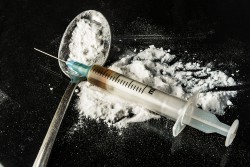Opiate Withdrawal Symptoms Timeline
Opiates are those naturally occurring psychoactive chemicals of the opium poppy plant (including morphine, codeine, and thebaine) and used in the manufacturing of many opioid painkillers. The most abundant of these chemicals is morphine which most closely resembles endogenous chemicals our brains produce naturally to keep us well and from which heroin is synthesized.
The term ‘opiate’ is often used interchangeably with the term ‘opioids’ which accounts for the collective drugs that produce similar effects to morphine. In relative terms, opiates include a vast array of drugs including those semi-synthetic drugs made from opiates such as oxycodone or hydrocodone, and the synthetic drugs like methadone, buprenorphine, and fentanyl.
Everyone who is repeatedly exposed to opiates with consecutive doses develops a tolerance to the drug and opiate withdrawal symptoms emerge as a result of ceasing use afterwards. This is easy enough to understand, but, the opiate withdrawal symptoms timeline becomes much more complex.
Using Opiates

Heroin is considered a schedule I opiate.
Opiates are controlled substances under various schedules of the Controlled Substances Act where their placement is based on their acceptable medical use, safety and dependence liability, and potential for abuse. Heroin is an opiate that is classified as a Schedule I substance having no acceptable medical purpose or safety in use while most of the other opiates have been classified as Schedule II substances because they have a high potential for abuse and dependence liability.
People are prescribed opiates for therapeutic purposes such as relieving pain, cough, or diarrhea. The side effects are sedation, relaxation, and euphoria if a high enough dose is consumed and these side effects propagate abuse. Heroin is a highly potent drug that is usually injected and the dependence to this drug is rapid and extreme. Heroin abusers will have a much more difficult and longer lasting withdrawal than a person who has used codeine for a few days, therapeutically.
The longer a person takes opioids, the higher and more frequent their dosage is, the drug potencies, and methods of use all play a critical role in tolerance and dependency developments and add to the symptom logy, severity, and duration of the opiate withdrawal timeline.
The Early Phase of the Opiate Withdrawal Symptom Timeline
The half-life of a drug plays a critical role in the opiate withdrawal symptoms timeline. The half-life of shorter acting opiates like heroin and morphine can cause the emergence of withdrawals within hours of the last dose, whereas the half-life of methadone and buprenorphine are much longer and the withdrawals may not emerge for 24 – 36 hours. The earliest symptoms include:
- Anxiety and agitation
- Loss of appetite
- Intense cravings for more opiates
- Dilated Pupils
- Uncontrollable yawning
- Dilated pupils
- Runny nose
- Teary Eyes
The Acute Phase
These symptoms will continue to progress and get worse over the next 2-3 days with additional symptoms appearing as a result of increased autonomic hyperactivity at any time. Additional opiate withdrawal symptoms that appear during the acute phase may include:
- Sweats and chills
- Goose-bumps
- Insomnia and extreme restlessness
- Muscular spasms, aches, and overall body pains
- Extreme fatigue and weakness
- Nausea, diarrhea, and vomiting
- Dehydration
- Tachycardia
- Fluctuations in breathing
- Heightened sensitivities to environmental stimuli
According to the DEA 2011 Resource Guide, “without intervention, the withdrawal usually runs its course, and most physical symptoms disappear within days or weeks, depending on the particular drug.”
Many physical symptoms peak around days 3-4 and begin to subside afterwards, but, longer acting opioids, biological factors, and higher levels of physical dependence can delay suffering. It is also during this point that other complications with health may become exacerbated and with additional physical or psychological symptoms, the withdrawal process may become too much to bear for many who lose hope, and relapse to the opiate drugs.
Post-acute Opiate Withdrawal Symptoms Timeline
This is the most unpredictable timeline for opiate withdrawal symptoms. Cravings and psychological symptoms can drag on for months or in some cases, indefinitely. These protracted withdrawals often lead back to relapse long after physical detox from opioids has been accomplished and the next withdrawal attempt is worse than the previous.
Conditioned cravings can result in “triggers” to use even though the conscious desires to use have ended and for these purposes, many people are only able to maintain their abstinence from illicit opiates with the use of medications like methadone or buprenorphine. Although these medications are also considered opiates because they produce similar effects, they are helpful in minimizing those conditioned cravings that place so many opiate dependents at risk without producing many of the adverse effects such as euphoria or sedation in appropriate doses.
Factors that Contribute to the Complexity of the Opiate Withdrawal Symptoms Timeline
Different drugs have different potencies and while most prescriptions painkillers are made to be taken orally, they are often abused via rapid delivery methods, much like heroin, including smoking, injecting, or snorting the drugs. These abusers are at added risk of infections, diseases, and other serious health compromises that can slow down the withdrawal process or exacerbate the symptoms.
Other factors that contribute to the complexity of the opiate withdrawal symptoms timeline include the psychological health of the person, environmental influences, and the level of neuronal adaptations that have taken place as a result of altered brain functions. If the person has been using opiates heavily for a while, they are likely to be up against some powerful forces.


